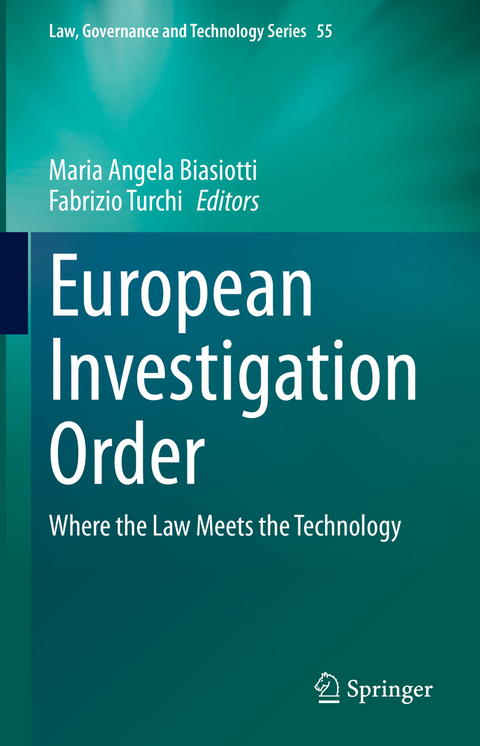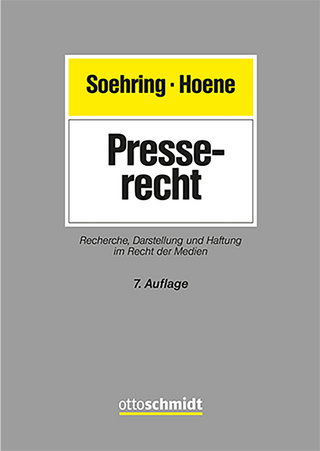
European Investigation Order
Springer International Publishing (Verlag)
978-3-031-31685-2 (ISBN)
The European Investigation Order (EIO) allows judicial authorities to request evidence more quickly and easily than via traditional instruments. The EIO has become the primary legal tool for gathering trans-border evidence, replacing the traditional Mutual Legal Assistance (MLA) conventions previously used. However, the EIO is not the only pertinent legal instrument for cross-border evidence gathering within the EU. Accordingly, professionals need a clear understanding of this subject.
Exchanging evidence among judicial authorities in the EU Member States presupposes twoessential components. First, there must be a secure communication channel. This is provided by e-CODEX, which offers a European digital infrastructure for secure cross-border communication in the field of justice. Recently (May 30th, 2022), the e-CODEX system became the digital backbone of EU judicial cooperation in civil and criminal matters on the basis of Regulation 2022/850. To achieve effective evidence exchange via EIO/MLA legal instruments, there must also be a communication tool. This is provided by the e-Evidence Digital Exchange System, which is capable of managing any EIO/MLA procedures/instruments, from the e-Forms (EIO Annexes) to the whole business logic, on the basis of the e-CODEX system. Finally, it is essential to use a uniform standard for the representation of evidence data and metadata, so as to streamline the process and make investigations more effective, in particular when it comes to complicated criminal cases where it is key to find either correlations amongdifferent cases or to extract multiple types of data from the same inspection. The importance of cross-border evidence exchange in criminal matters cannot be overstated. This book addresses all the above-mentioned aspects, offering an up-to-date overview of scenarios in cross-border judicial cooperation from both juridical and technical standpoints.
lt;p>Maria Angela Biasiotti is a Research Director at IGSG-CNR. She has a degree in Law (1999) and a PhD in Information Technologies and Law (2008) from the Faculty of Law, Bologna University. In 2001, she started working at the Institute of Legal Information Theory and Techniques (CNR-ITTIG, now CNR-IGSG). In March 2014, she coordinated the EVIDENCE Project (European Informatics Data Exchange Framework for Court). In March 2018, she coordinated the EVIDENCE2e-Codex Project (Linking EVIDENCE into e-CODEX for EIO and MLA procedures in Europe). Since April 2020 she has coordinated the TREIO Project (Training on EIO). She combines a solid practical experience in law, she has practised as a lawyer in public law, administrative law and EC law for an Italian leading law firm) with a broad knowledge in ICT and law. Her main research areas involving legal informatics, computer law, legal information modelling and accessing, and legal information documentation management and dissemination, computer law, digital evidence, data protection. She is the author of many scientific works and contributions presented at international conferences. She organised conferences, workshops and summer schools in her domain of research and activity.
Fabrizio Turchi is a Technology Executive at IGSG-CNR. His research activities are the applications of IT to legal domain, legal standard and legal drafting, use of the XML technologies to devise legal documents models. He has been designing and developing web applications, formal parsers to identify parts and structures that exist inside textual documents and natural language processing techniques applied to legal documents for knowledge extraction, such as automated text classification and anonymity processes based on Named Entity Recognition (NER). His recent interests focus on the standard representation of the data and meta data of digital evidence, by using the UCO/CASE ontology. He has been involved in many European Projects dealing with the exchange of digital evidence among Competent Authorities in the EU Member States: EVIDENCE (European Informatics Data Exchange Framework for Court); EVIDENCE 2e-CODEX (Linking Evidence into e-CODEX for EIO and MLA procedures in Europe); EXEC-II (Electronic Xchange of e-Evidences); INSPECTr (Intelligence Network and Secure Platform for Evidence Correlation and Transfer).Introduction: Setting the Scene on EIO and the Interaction between Law and Technology.- EU Legislation on EIO and Its Implementation in the Member States.- EU Initiatives on the Implementation of the EIO.- The Challenging Path towards the Establishment of the EU Legal Framework Regulating Cross-border Access to Digital Evidence.- Evidence Exchange under the EIO: Technological Challenges.- e-CODEX: A Secure Infra-structure for Cross-border Cooperation.- e-Evidence Digital Exchange System (eEDES).- Evidence Exchange Standard Package: An Application CASE Ontology Complied for the Preparation of the Evidence Package and Its Exchange.- Legal Framework for Digital Evidence Following the Implementation of the EIO Directive: Status Quo, Challenges and Experiences in Member States.- Data Protection and European Investigation Orders.- Different Perspectives on EIO.- Training on EIO: Overview of Training Courses in the EU.- Training on EIO: TREIO Project.
| Erscheinungsdatum | 05.08.2023 |
|---|---|
| Reihe/Serie | Law, Governance and Technology Series |
| Zusatzinfo | VI, 206 p. 45 illus. in color. |
| Verlagsort | Cham |
| Sprache | englisch |
| Maße | 155 x 235 mm |
| Gewicht | 475 g |
| Themenwelt | Recht / Steuern ► EU / Internationales Recht |
| Recht / Steuern ► Öffentliches Recht | |
| Recht / Steuern ► Privatrecht / Bürgerliches Recht ► Medienrecht | |
| Schlagworte | Acquisition of electronic evidence • Criminal justice cooperation • cybercrime • digital forensics • European investigation order • European policies and strategies • Exchange of evidences • Fighting Crime in Europe • ICTs Technology |
| ISBN-10 | 3-031-31685-1 / 3031316851 |
| ISBN-13 | 978-3-031-31685-2 / 9783031316852 |
| Zustand | Neuware |
| Haben Sie eine Frage zum Produkt? |
aus dem Bereich


